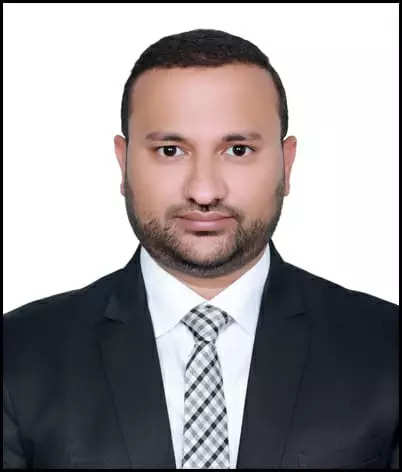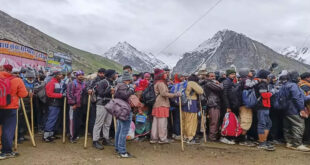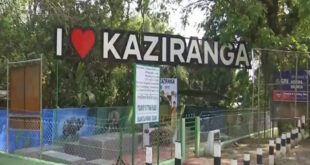[ad_1]

The tourism landscape in Uttar Pradesh has steadily evolved and a total number of 27 crore tourists visiting the state last year speak for itself. A recent report revealed that Uttar Pradesh now holds the top position in terms of tourist arrivals, overtaking the tourist influx observed in Goa.
While Goa, which was previously leading in this aspect, clocked 80 lakh tourists, Uttar Pradesh received seven crore devotees just to Kashi (Varanasi) and a substantial increase of numbers in Braj area.
Though religious tourism has long been the cornerstone of Uttar Pradesh’s tourism sector, the state is now actively working to cultivate other segments that can offer more engaging experiences, said UP’s Director Tourism, Prakhar Mishra.
According to Mishra the state has shifted from pilgrimage-focused tourism to encompass a broader concept of tourism and is strategically aligning its offerings to match the trends.
“While religious sites like Varanasi, Prayagraj, Mathura, and Vrindavan remain significant attractions, we are working to create tourism products centered around these areas to establish them as hubs. Our focus also extends to ecotourism, rural tourism, and adventure tourism,” Mishra told ETTravelWorld while talking about the state’s multifaceted strategy.
Switching gears to rural tourism, Mishra spoke about the identification of around 239 villages that would offer travellers an authentic experience of the state’s culture.
To achieve this, UP Tourism has appointed rural tourism consultants for each village. “These consultants will play a vital role in developing these villages as experiential tourism destinations,” he said. “They will formulate a comprehensive plan, conduct gap analysis, and identify each village’s unique selling points.”
“Our consultants will work in a milestone-based model,” Mishra added. “They’ll receive payments/ grants at different stages based on their achievements.” He elaborated on the consultant’s role, beginning with the inception report and roadmap that will be created for each village. This includes identifying areas for government budget allocation or exploring public-private partnerships (PPPs) to enhance infrastructure. This may involve leveraging government schemes like “My District, My Project” by NABARD, which offers grants to convert houses into functional homestays.Sharing details on the role and responsibilities of rural tourism consultants, he said these consultants will be establishing at least five homestays in each village. To encourage rural homestays, agreements are made with locals willing to offer their homes for lodging. “Aggregators like Oyo, Treebo, and Airbnb come into play here,” he said. “Private players are involved, ensuring quality standards are maintained.”
Creating a brand for these rural experiences is essential, asserted Mishra, adding that consultants will engage with tour operators to craft curated tours and establish social media presence across platforms like YouTube, Facebook, and Instagram.
District Tourism and Culture Councils (DTCC) are a linchpin in this process. “DTCCs will ensure that consultants and beneficiaries are in close coordination,” Mishra emphasised.
“Our vision for rural tourism is expansive and transformative. We want these villages to not only become thriving tourist attractions but also contribute to the local economy. We’re also encouraging the establishment of self-help groups to sell local commodities, further enriching the tourist experience.”
As for operational timelines, Mishra explained that the process is ongoing.
Filling the policy void for adventure tourism
The Uttar Pradesh Cabinet recently gave a greenlight to a 10-year Water Tourism and Adventure Sports Policy, aimed at transforming the state into a premier water tourism and adventure sports hub. The policy capitalises on UP’s water resources like rivers, canals, and lakes, including the Ganges and Yamuna, to craft tourist experiences and also focus on safety and certification of adventure sports infrastructure.
“One challenge that adventure tourism faced in Uttar Pradesh was the absence of a clear-cut policy,” Mishra acknowledged. He emphasised that while certain states such as Goa and Madhya Pradesh had successfully formulated adventure tourism policies, UP was yet to have a dedicated framework in place.
Mishra stated that this new policy has been designed to rectify this gap and to address the intricate facets of adventure tourism. “Drawing insights from the Adventure Tour Operators Association of India, the policy outlines stringent guidelines encompassing qualifications for personnel and specifications for diverse assets, ensuring safety and adherence to standards,” Mishra stated.
Through the policy that was launched on August 1, an emphasis on public-private partnerships will be deepened and the government will offer incentives and backing to private investors keen on water tourism and adventure sports ventures.
For adventure tourism, UP Tourism is also planning to introduce activities like hot air ballooning in Varanasi. This venture marks a significant step towards bolstering adventure tourism activities in the region, according to Mishra.
“We are also actively engaging with the Irrigation department to explore possibilities of boating and water sports in dams,” informed Mishra. “The delicate balance between utilising water resources for recreational activities and fulfilling essential needs like irrigation poses challenges that UP Tourism is working to navigate,” he added.
Mishra disclosed a plan to revitalise 18 old guest houses owned by the Irrigation department is chalked out by the tourism department. These properties are slated to be transferred to UP Tourism and subsequently handed over to private developers under the build-operate-transfer model.
UP Tourism is also concentrating on developing 27 bird sanctuaries and two new tiger reserves: Ranipur Tiger Reserve and Amangarh Tiger Reserve. These efforts aim to provide a unique experience for tourists, especially those from Delhi seeking alternatives to crowded destinations like Corbett, according to Mishra.
Additionally, smaller bird sanctuaries such as Nawabganj and Saman are being revamped, with private investment being solicited for infrastructural enhancements. To address infrastructural challenges, over 5,000 Yuva Tourism Clubs have been established in the state to facilitate curated tours for students and boost tourism footfall.
“Additionally, we’ve set up an Ecotourism Board to coordinate efforts and maximise the potential of ecotourism in the state,” added Mishra.
Speaking about ensuring responsible and sustainable travel, Mishra further added that it is a key priority for UP Tourism.
“For infrastructure planning, we are collaborating with development authorities to ensure proper infrastructure planning in high-traffic areas, such as Ayodhya and Prayagraj, to manage crowds and enhance visitor experiences,” said Mishra.
He added that to minimise carbon footprints, initiatives like plastic-free zones in ecotourism spots and promoting eco-friendly practices are being implemented. “We encourage tourists to deposit plastic bottles and practice responsible waste disposal.”
“We are also conducting information, education, and communication (IEC) campaigns to educate tourists about sustainable practices and encourage responsible behaviour while visiting monuments and natural sites.
Carrying capacity calculations are also being applied to ecotourism destinations to ensure tourism activities are within sustainable limits, preserving the local ecosystem.
Converting havelis to boost heritage tourism
The state government is now directing its attention towards heritage tourism as a means to enhance the hospitality offerings within the state. A crucial aspect of this initiative involves the restoration and repurposing of historical palaces and ‘havelis’ for tourism purposes. The state tourism department is engaged in the transformation of pre-1950 structures, including old buildings, forts, and mansions, into heritage hotels, public museums, and venues for meetings, incentives, conferences, and exhibitions (MICE).
“Uttar Pradesh’s approach involves repurposing around 12 properties previously under the state archaeology department, now leased for 30+30 years to private developers who must retain the original architectural integrity while monetising the cultural value. The inspiration for this approach is drawn from Rajasthan’s successful implementation of heritage tourism,” informed Mishra.
“This approach aims to monetise heritage properties and create new tourism products in places like Bundelkhand which is known for its historical significance and abundant cultural resources.”
Source link








